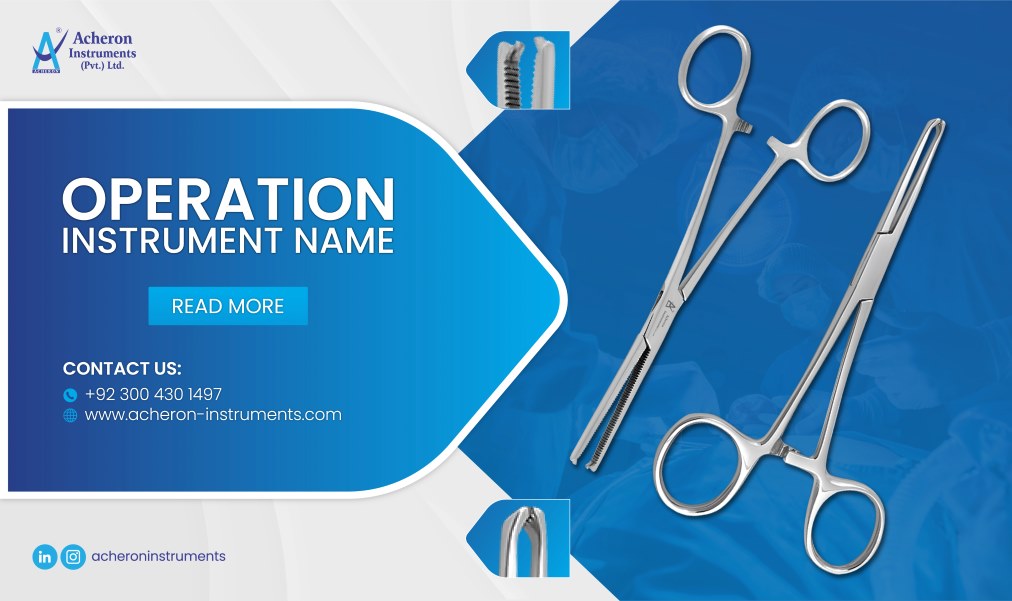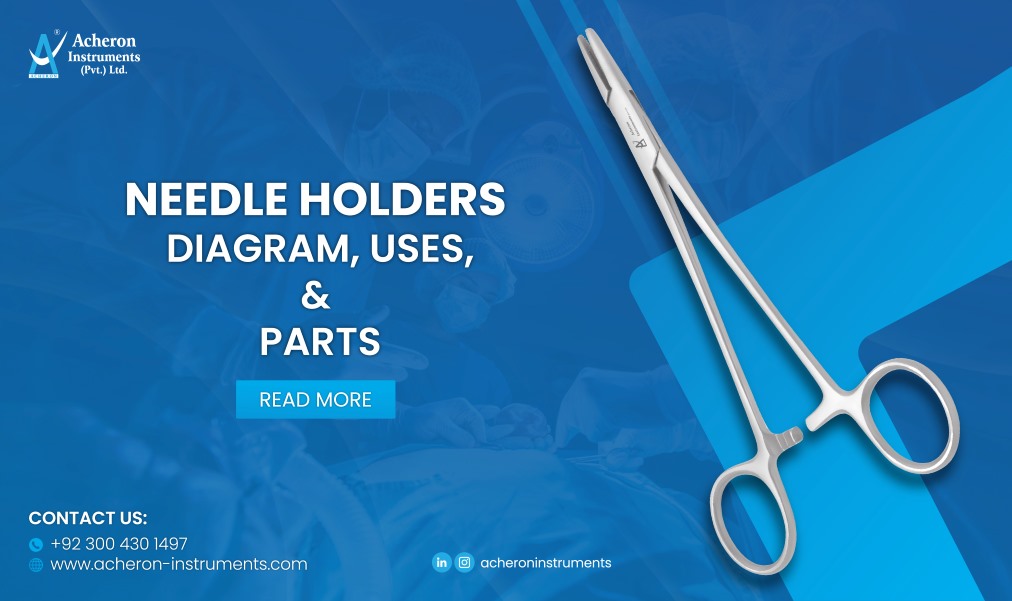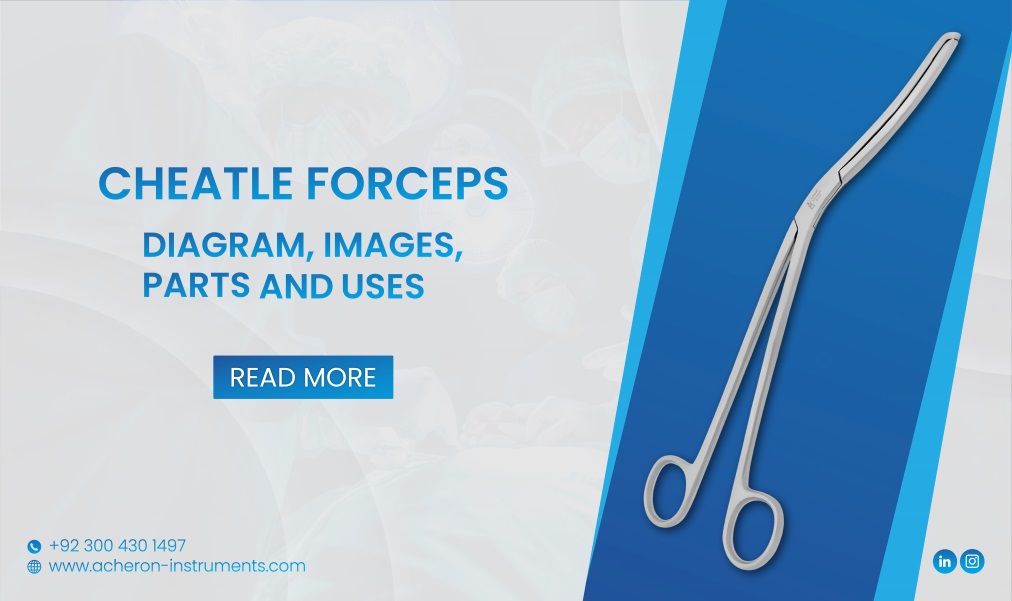Delivery is the process of bringing a new life into the world, for this obstetricians need obstetrics instruments like forceps, vacuum extractors, and more.

Top 10 Must-Have Delivery Instruments for Every Obstetrician
Delivery is a miraculous process of bringing a new life into the world. To achieve the expected and life-saving results, obstetricians need the aid of surgical instruments to cope with the risks and vulnerabilities associated with the delivery process. In this blog, we will explore the top 10 must have delivery instruments' name, their specifications, and images. Let’s get started!
Top Essential Delivery Instruments Used in Labor and Childbirth
Let’s find out the top essential delivery instruments that assist surgeons in labor and childbirth. These precision instruments enable surgeons to save the precious lives of mothers and their babies. Here are the essential delivery instruments:
Adson Dissecting Forceps
Adson Dissecting forceps are designed to hold and grasp delicate tissues. During delivery, they assist surgeons in the precise handling of delicate tissues for dissection and needle manipulation.
Artery Forceps
During normal or vaginal delivery, there is blood loss varying from woman to woman. On average women lose blood around 500ml to 1000ml which can be dangerous if bleeding is not controlled. To control bleeding, obstetricians use Artery forceps that enable them to limit blood vessel hemorrhage and achieve hemostasis.
Sponge Holding Forceps
Sponge holding forceps are useful instruments during delivery for holding sponges and surgical dressings. They maintain a sterile surgical environment to ensure the prevention of post-surgery infections and the patient’s safety. For deliveries, they are used for:
- Holding and grasping sponges and surgical dressings.
- To clean the perineal area to reduce the risks of infections in case of episiotomy or tearing.
- To clean the wound site and apply the necessary medications
Learn more about Sponge holding forceps.
Episiotomy Scissors
Episiotomy is the procedure for making a large incision between the vaginal opening and anus i.e. perineum. It is done to enlarge the vaginal opening to facilitate the baby’s delivery when a quick delivery is expected. For this procedure, surgeons or obstetricians use episiotomy scissors.
These instruments feature curved blades for making a clean cut, minimizing trauma to the surrounding tissues, and ensuring safety.
Scalpel Handle No. 4
Scalpels are essential tools when surgeons have to make incisions where the sharpness of blades for precision is concerned. Surgeons use scalpel blades for the episiotomy procedure and switch from one scalpel blade to another during different situations. They can do so with the help of a scalpel handle that allows easy insertion and removal of blades. Most commonly Scalpel handle no.4 is preferred by surgeons for facilitating precise cuts.
Umbilical Cord Scissors
Umbilical Cord Scissors is the essential scissors to facilitate the final stages of childbirth. It assists surgeons in cutting the umbilical cord with its overlapping blades featuring blunt, rounded, and broad tips. This efficient scissor cuts the umbilical cord keeping it in the right position without clamping the umbilical cord.
Kocher forceps
Kocher forceps also known as obstetrics forceps or delivery forceps are essential delivery instruments. They assist gynecologists in the delivery of the baby during childbirth when vaginal delivery needs aid of forceps-assisted vaginal delivery. They are used for the following situations:
- Doctors have to rotate and guide the fetal head into the correct position when the baby’s head does engage in the birth canal.
- Provides traction during contractions and ais in descending the baby's head through the birth canal
- For moving the baby’s head into a more favorable position
- When the well-being of the baby or the mother is concerned for facilitating the delivery
Instrument Tray
An instrument tray is an essential surgical equipment present in every operating room for holding them for sterilization after the procedure. This tray can be used for:
- Protection and shielding from any damage or harm
- For holding the tools and transporting them from one place to another
- To create a sterile environment by holding and covering instruments before and after use
Ventouse
Delivering a baby is not an easy job for both the mother and the doctor. Sometimes, the situation is different from one’s expectations and gynecologists have to make instant decisions to save lives. In such situations, a ventouse also known as a vacuum extractor or vacuum suction cup is used to assist the delivery process.
This instrument includes the suction pump with the handle. The suction cup is positioned on the baby’s head through the vaginal canal and the gynecologist waits for the next contraction. When the mother starts pushing, the doctor will assist her by gently guiding the baby down the birth canal. Use of ventouse is preferred in situations:
- Mother is tired after a long labor
- When the baby is in distress or there is a change in the baby’s heartbeat
- The mother is unable to push due to health conditions like high blood pressure
Kidney Dish
A kidney dish is specialized equipment for collecting medical waste generated during surgery or procedures. This kidney-shaped equipment with shallow basins helps us transfer medical wastes like bandages, swabs, dressings, and others.
These are the top 10 must have delivery instruments without which we cannot imagine a delivery process.
Sterilization and Care of Delivery Instruments in Medical Settings
Delivery instruments are reusable instruments after sterilization as they are not intended to be wasted after one use. To ensure patient safety and prevent the risk of infections, instruments must be sterilized with some standard methods. Here are some methods to sterilize delivery instruments:
Autoclaving
Autoclaving is one of the best sterilization methods for heat-resistant and glassware instruments. This sterilization method involves high-pressure steam to sterilize the instrument.
Chemical Sterilants
Hydrogen peroxide or peracetic acid are some chemical sterilants and disinfection for items sensitive to heat or moisture. They are useful for endoscopes and certain medical devices.
Radiation
Radiation-based methods like gamma rays are electron beams are used for medical items intended for one-time use. The medical items include syringes and gloves for which radiation-based methods are employed.
Filtration
For removing microorganisms, the filtration method can be used. This method involves passing a substance through a filter with microscopic pores. This method is commonly used for pharmaceuticals and biotechnology.
Dry Heat sterilization
This method involves hot air to destroy microorganisms to remove from the instruments’ surface. This is ideal for instruments sensitive to moisture.
How do Delivery Instruments help Ensure a Safe Childbirth Process?
Delivery instruments aid doctors or obstetricians in situations when they are unable to deliver the baby without medical intervention. They assist surgeons when there are potential risks to the lives of the mother and baby. Delivery Instruments ensure safe delivery by giving timely assistance and helping surgeons take instant actions in critical situations. From making incisions to the final delivery stages, they assist in every step.
The Role of Delivery Instruments in High-Risk Childbirths
Delivery instruments play a vital role in high-risk childbirths as they cannot be handled without medical intervention. They assist in the following alarming situations:
- Forceps and vacuum extractors assist in pushing the baby out during prolonged labor
- Forceps guide the fetal head in case of baby’s distress and irregular heartbeat
- Forceps assist in handling the breech situation by repositioning the fetal head
- Vacuum extractors help in pushing when the mother is unable to do so with weak contractions
So these are some alarming situations that delivery instruments help gynecologists easily handle.
Choosing the Right Delivery Instrument for Different Birthing Situations
Delivery is the most critical process for the doctors and the mother. During delivery, the mother and baby's lives are at stake and depend on the skillful hands of the obstetricians and the precise delivery instruments. So, choosing the right and precise delivery instruments is essential for successful childbirth.
Acheron Instruments is a leading Pakistan-based surgical instruments manufacturer that provides high-quality surgical instruments. Visit us to upgrade your delivery instrument toolkit for surgical excellence and successful outcomes.
FAQs
What are the names of delivery instruments?
Common and essential delivery instruments include forceps, vacuum extractors, Umbilical cord and episiotomy scissors, scalpel blades, instrument trays, and kidney dishes. Forceps include Kocher forceps, Sponge-holding forceps, Artery forceps, and Adson dissecting forceps.
What instruments are used in normal delivery?
The instruments used in normal delivery include forceps, scissors, needle holders, vaginal speculum, vacuum extractors, scalpel blades and more.
What is the name of the instrumental delivery?
The name of the instrumental delivery is assisted vaginal delivery which needs the assistance of a vacuum extractor and forceps.
What instruments are in a delivery pack?
Artery forceps, Adson dissecting forceps, sponge-holding forceps, Umbilical Cord Scissors, Kocher forceps, and episiotomy scissors are packed in the delivery pack.
Which forceps are used for delivery?
Simpson forceps are commonly used for delivery when the baby’s head needs assistance to pass through the birth canal. They are specifically used for situations when the baby’s head is already low in the birth canal needing assistance.








